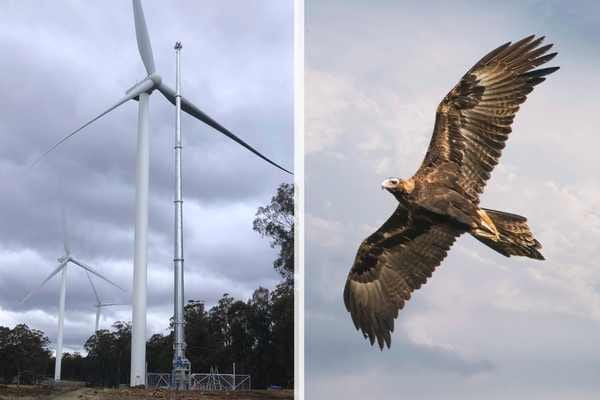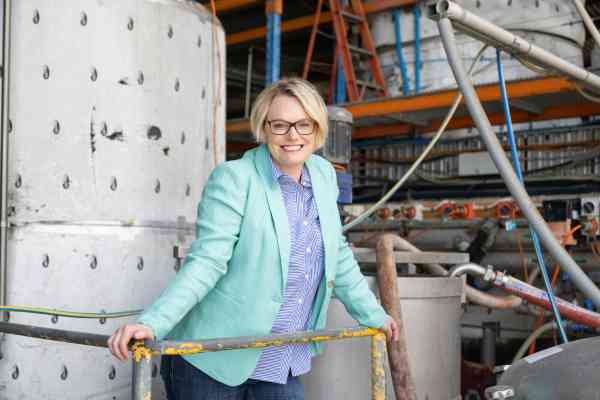Purifying plants vs the urban jungle
Innovators are harnessing the cleaning power of algae and moss to help city dwellers breathe easier.

Innovators are harnessing the cleaning power of algae and moss to help city dwellers breathe easier.
How do you bring the air-cleansing benefits of a small forest to polluted urban environments?
A vertical garden concept called the CityTree (pictured) claims to do exactly that by harnessing moss to do the work of more than 250 trees.
Its maker, Dresden start-up Green City Solutions, describes it as a combination of street furniture and biofilter, as it doubles as a wifi, e-bike charger and tourist information hub. The core technology is a moss filter that combines the natural filtering properties of moss with control and measurement technology.
Although the tech does not aim to replace trees, it does have some benefits – these vertical gardens grow more quickly and take up less space than their leafy counterparts, which comes in handy in densely populated urban areas.
Special moss cultures filter fine dust and other harmful substances from the air. They are watered using a rainwater tank with nutrients pumped to where they’re needed using solar power.
A new version of CityTree called CityBreeze combines this active moss filter with a large LED screen on which to run advertising, which enables the technology to pay for itself and potentially generate income over time.
The interaction of intelligent irrigation, ventilation, sensors and software makes the natural cleaning power of the CityTree both functional and measurable, according to its maker.
“It‘s important to realise, air pollution is one of the world‘s biggest environmental problems and is responsible for one in seven deaths,” says co-founder and managing director of Green City Solutions Peter Sänger.
“With our products, we want to help people in particularly polluted urban locations to enjoy clean air and thus better health and quality of life.”

He says the current coronavirus pandemic has made the company even more aware of the importance of its mission. “Poor air quality promotes not only cardiac arrhythmias and dementia, but also lung and respiratory diseases.”
CityTrees have been installed in many cities including Dresden, Oslo, Paris, Hong Kong, Budapest, and Glasgow.
Corporate customers include Telekom, GLS logistic services, and UK railroad company LNER and the largest CityTree user is soon to be the Cork City Council in Ireland, which has plans to install five of them at two busy locations.
Algae power
Standing four metres high and three metres wide, the BioUrban 2.0 from Mexican startup BioMitech resembles a mechanical tree, and like a real tree, it turns carbon dioxide into oxygen and also cleans pollutants from the atmosphere.
At the centre of the BioUrban are cylinders of live algae. These algae have the photosynthetic capacity to remove carbon and nitrogen oxides, as well as particulate matter from the air, powered by solar energy, and can do the air purifying of around 368 trees.
Its makers say they do not aim to replace real trees, except in places where they are not viable, such as in busy urban spaces with high pedestrian and road traffic to help alleviate air pollution.
So far the company has installed its BioUrban trees, which reportedly cost around US$50,000 apiece, in a busy road intersection in Puebla, Mexico – the home of BiomiTech, as well as Colombia, Peru and Turkey. The company has also developed smaller models which can be used indoors.
Urban ecosystems
Fytogreen, an Australian company, creates urban ecosystems including green facades and roof gardens designed to provide benefits such as cooler interiors, improved stormwater management, noise reduction, aesthetic appeal and biodiversity.
This year the company won an innovation award for its Platinum Tower Green Façade in Melbourne Australia. On the tower, a green façade runs between levels 2 to 10 of the tower, wraps around the podium and provides a natural ventilation system for the car park within.
The company also recently created a green roof featuring 10,000 native shrubs and grasses on a new campus at the University of Tasmania. The green roof is expected to provide a natural refuge for native wildlife.





